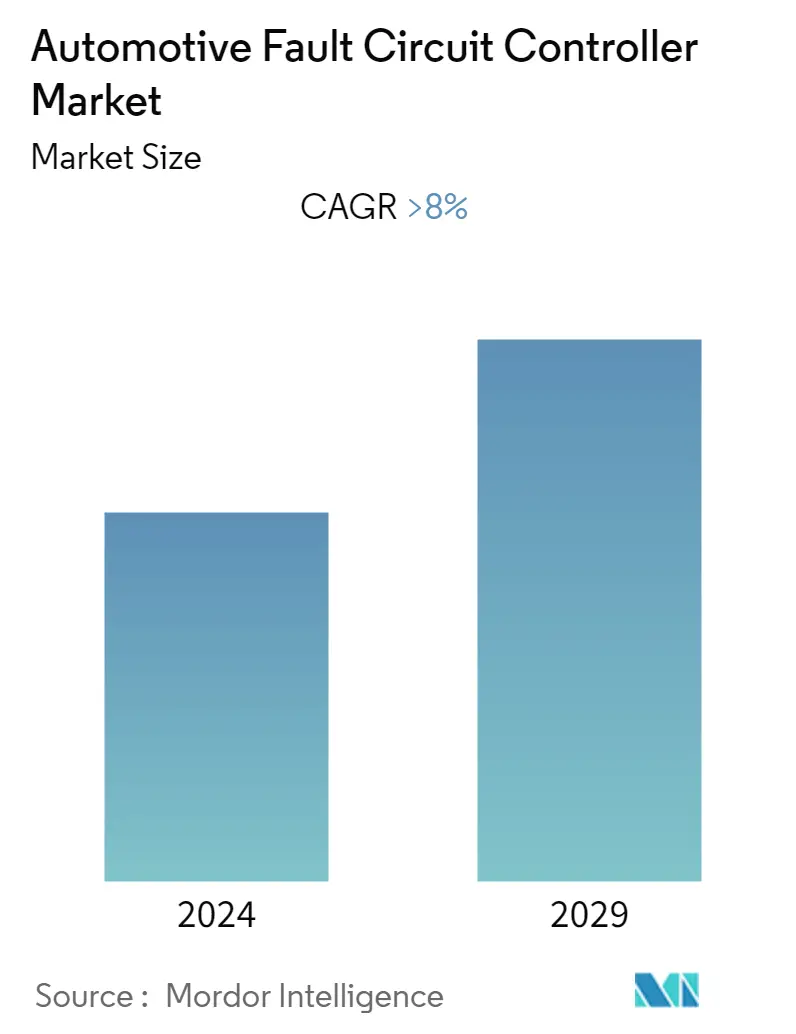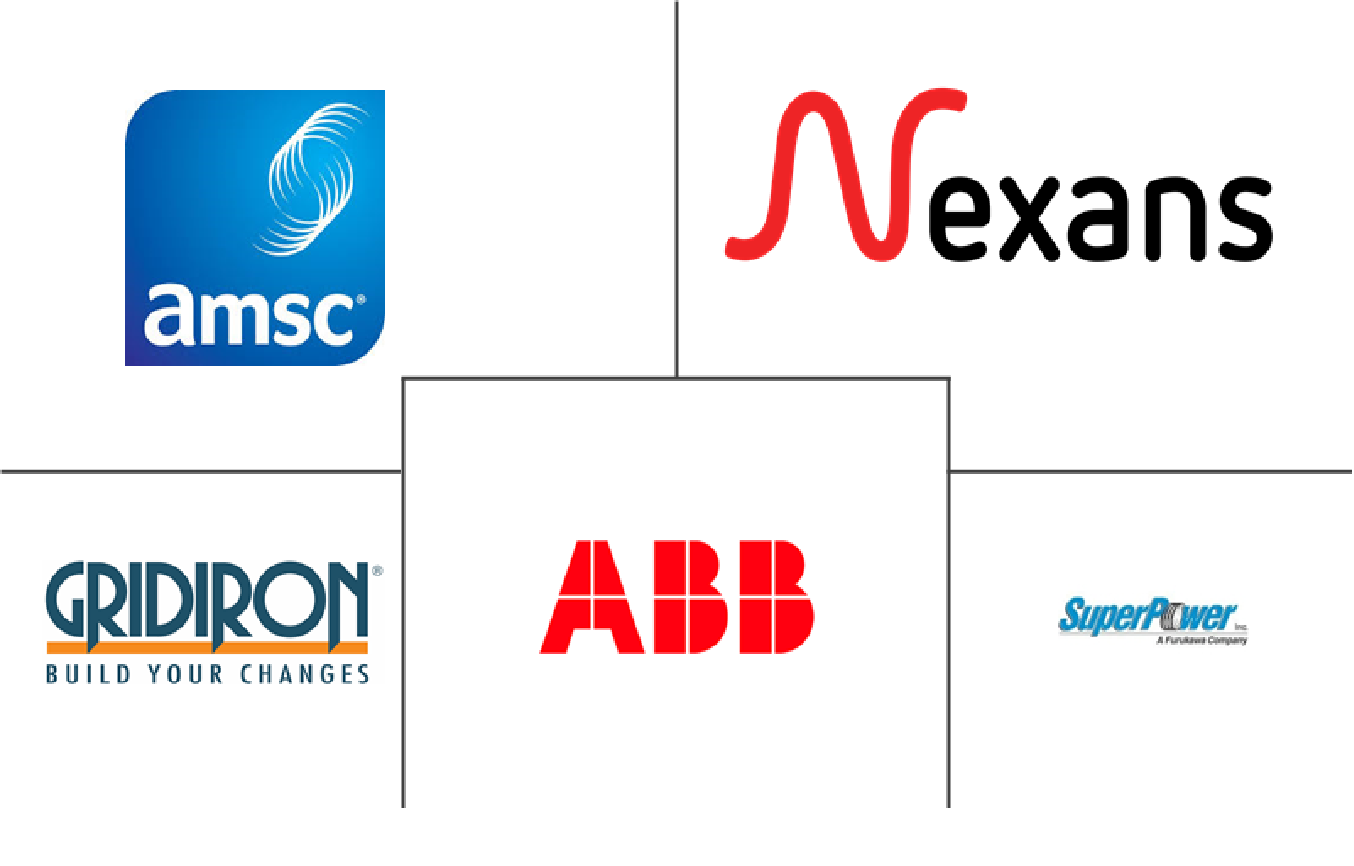Market Size of Automotive Fault Circuit Controller Industry

| Study Period | 2019 - 2029 |
| Base Year For Estimation | 2023 |
| CAGR | 8.00 % |
| Fastest Growing Market | Asia Pacific |
| Largest Market | North America |
| Market Concentration | Low |
Major Players
*Disclaimer: Major Players sorted in no particular order |
Automotive Fault Circuit Controller Market Analysis
The automotive fault circuit controller market is expected to register a CAGR of over 8% during the forecasted period (2020 - 2025)
- High fuel costs and strict regulations on emissions have forced OEMs to generate lighter and energy-efficient vehicle systems. Thereby, the mechanical and hydraulic systems are replaced with electrical systems, causing the amount of electrical power carried by the vehicle's Electrical Wire & Interconnect System (EWIS) to almost double. With the increase in electrical systems, the supply voltages can range from 12 to 20 V, depending on the battery charge state. Thereby, the growing intermeshing of power systems is increasing the likelihood that the switchboards will be subjected to unacceptably high short-circuit currents. Reliable and economic protection against these surge currents is provided by the fault current limiter and this is expected to help the market grow during the forecasted period.
- The Fault circuit controller controls the amount of current flowing and thereby providing uninterrupted operation of the systems in automobiles. OEMs are continuously investing into R&D to develop improvised superconductors to suit the technology advancements in the power network of automobiles. Electrical cars are projected to register a CAGR of over 21% during the forecasted period, with favourable government policies and support in terms of subsidies and grants, taxes rebates, and other benefits is expected to help this market grow at an exponential rate during the forecasted period.
Automotive Fault Circuit Controller Industry Segmentation
The Automotive fault circuit controller market report contains the latest trends and technological developments in the market, demand by Device Type, Voltage, Vehicle Type, Geography, and share of major players across the market.
| Type | |
| Superconducting Devices | |
| Non- Superconducting Devices | |
| Others |
| Voltage | |
| High Voltage | |
| Medium Voltage | |
| Low Voltage |
| Vehicle Type | |
| ICE Vehicle | |
| Electric Vehicle |
| Geography | |||||||
| |||||||
| |||||||
| |||||||
|
Automotive Fault Circuit Controller Market Size Summary
The automotive fault circuit controller market is poised for significant growth, driven by the increasing electrification of vehicles and the need for efficient energy management systems. As original equipment manufacturers (OEMs) strive to meet stringent emission regulations and reduce vehicle weight, there is a notable shift from mechanical and hydraulic systems to electrical systems. This transition has nearly doubled the electrical power requirements within vehicles, necessitating robust solutions like fault circuit controllers to manage surge currents and ensure uninterrupted operation. The market is further bolstered by the rising adoption of electric vehicles, supported by favorable government policies and incentives, which are expected to accelerate the demand for advanced electrical components and systems.
In addition to the technological advancements, the market is influenced by regulatory frameworks and safety standards that mandate the integration of sophisticated electronic systems in vehicles. The proposed bans on internal combustion engine vehicles in various countries are propelling the shift towards electric vehicles, thereby enhancing the demand for automotive fault circuit controllers. The United States, as a leading manufacturer of electric automobiles, is witnessing increased investments in research and development to create cost-effective and efficient systems. This trend, coupled with the need to comply with environmental regulations, is expected to drive the market forward. The competitive landscape is characterized by the presence of key players such as ABB Limited, Siemens AG, and GE Industrial, who are actively engaging in strategic initiatives to maintain their market positions.
Automotive Fault Circuit Controller Market Size - Table of Contents
-
1. MARKET DYNAMICS
-
1.1 Market Drivers
-
1.2 Market Restraints
-
1.3 Porters Five Forces Analysis
-
1.3.1 Threat of New Entrants
-
1.3.2 Bargaining Power of Buyers/Consumers
-
1.3.3 Bargaining Power of Suppliers
-
1.3.4 Threat of Substitute Products
-
1.3.5 Intensity of Competitive Rivalry
-
-
-
2. MARKET SEGMENTATION
-
2.1 Type
-
2.1.1 Superconducting Devices
-
2.1.2 Non- Superconducting Devices
-
2.1.3 Others
-
-
2.2 Voltage
-
2.2.1 High Voltage
-
2.2.2 Medium Voltage
-
2.2.3 Low Voltage
-
-
2.3 Vehicle Type
-
2.3.1 ICE Vehicle
-
2.3.2 Electric Vehicle
-
-
2.4 Geography
-
2.4.1 North America
-
2.4.1.1 United States
-
2.4.1.2 Canada
-
2.4.1.3 Rest of North America
-
-
2.4.2 Europe
-
2.4.2.1 Germany
-
2.4.2.2 United Kingdom
-
2.4.2.3 France
-
2.4.2.4 Italy
-
2.4.2.5 Rest of Europe
-
-
2.4.3 Asia Pacific
-
2.4.3.1 India
-
2.4.3.2 China
-
2.4.3.3 Japan
-
2.4.3.4 South Korea
-
2.4.3.5 Rest of Asia-Pacific
-
-
2.4.4 Rest of the World
-
2.4.4.1 Brazil
-
2.4.4.2 Mexico
-
2.4.4.3 South Africa
-
2.4.4.4 Other Countries
-
-
-
Automotive Fault Circuit Controller Market Size FAQs
What is the current Automotive Fault Circuit Controller Market size?
The Automotive Fault Circuit Controller Market is projected to register a CAGR of greater than 8% during the forecast period (2024-2029)
Who are the key players in Automotive Fault Circuit Controller Market?
ABB Group, AMSC , Nexans, SuperPower-inc. and Gridon are the major companies operating in the Automotive Fault Circuit Controller Market.

